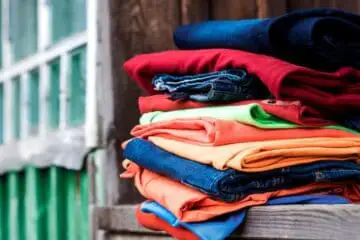Table of Contents
Classification and features of Fibre
Fibres are materials that are continuous filaments or are in discrete elongated pieces, similar to lengths of thread. fibres are often used in the production of other materials. The term fibre refers to natural fibres as well as synthetic or man-made fibres.
Textile fibres can be categorized and classified based on their various characteristics and properties. These fibres are primarily used in the production of textiles.

Classification Of Textile Fibres
There are different kinds of fibres with distinct qualities or features.
The features of the fibres vary depending on the origin of their production.
In general, fibres are divided into two main categories:
- Natural Fibres
- Synthetic fibre, also known as artificial fibre
1. Natural Fibres
Natural fibres are fibres that come from natural sources, such as animals, plants, and animal by-products. For instance:
Plant/Vegetable origin
- Blast fibres (jute, flax, ramie)
- Leaf fibres (sisal Manila)
- Seed and fruit fibres (Cotton)
Animal Origin
- Wood and hair fibre
- Silk and other filament.
- Mineral Origin Example: asbestos
2. Synthetic fibre or Man-made fibres
Synthetic fibre or Man-made fibres are fibres that are created by humans using artificial materials. These fibres can be categorized into two groups.
- Natural polymer-based materials include rayon, acetate, and triacetate, which are derived from cellulose.
- Polyester-based or non-cellulose-based materials include nylon and polyester.
Characteristics of Fibre
There are numerous substances that may appear similar to fibre, but they cannot be classified as fibre due to their lack of fibre-specific properties.
fibre properties refer to the characteristics that are employed to distinguish different types of fibre. These properties can be categorized into primary and secondary properties.
Primary Properties
The primary properties of a substance are absolutely necessary for it to be considered a textile fibre. This is because these properties are what allow the fibre to undergo processing, ultimately being transformed into yarn and then fabric.
Secondary attributes are extra properties that are not as crucial as primary attributes but are still desirable.
Secondary Properties
Secondary properties of textile products are what determine their use, appearance, durability, maintenance and even selection of such fibre.
Let’s consider an example: the connection between the properties of fibres and their primary and secondary characteristics.
Primary Properties Of Fibres
In order for a fibre to be made into yarn, it must have a length that is significantly longer than its width. The minimum required length to width ratio is 100:1 for processing.
1. Lenght
Fibre of considerable length is referred to as filament fibre, whereas fibre that is comparatively shorter is called staple fibres.
Filament fibres are renowned for creating fine and shiny yarn or fabrics, while staple fibres result in dull yarns and fabrics.
2. Tenacity/Strength
This term is employed to characterize the capacity of the fibre to endure external pressure without breakage while undergoing both mechanical and chemical procedures, and ultimately determining the textile’s durability.
3. Flexibility
fibres need to have the ability to bend repeatedly without breaking, known as pliability so that they can be converted into yarn and fabric.
4. Cohesiveness or spinning quality
This refers to the yarn’s capability to remain intact and properly bind together during its production process.
5. Uniformity
This refers to the consistent quality of fibres in terms of their primary properties.
Secondary Properties Of Fibres
The secondary properties of fibres are listed as follows:
1. Elongation
This refers to the extent to which a fibre can stretch without snapping or breaking.
2. Elastic Recovery
This refers to the capacity of fibres to revert back to their original length following stretching. The Lyra Fabric is one example of a fabric that possesses this particular characteristic.
3. Residency
This refers to the capacity of fibres to restore themselves to their initial state after being bent, creased, or folded.
Resilient fibres easily bounce back from wrinkles or folds. Examples of fibres with high resilience are wool, nylon, and polyester, while flax, rayon, and cotton are fibres with low resilience.
4. Moisture absorbency
Moisture Regain refers to a dry fibre’s capacity to soak up moisture. It is also commonly known as moisture absorbency. A fibre with high moisture absorbency easily takes in dye and special treatments and can be easily washed and provides greater comfort in hot weather conditions.
Additional characteristics of fibres include:
Various characteristics can be attributed to morphology, such as flammability, electrical conductivity, abrasion resistance, chemical resistance, biological resistance, and several others.



